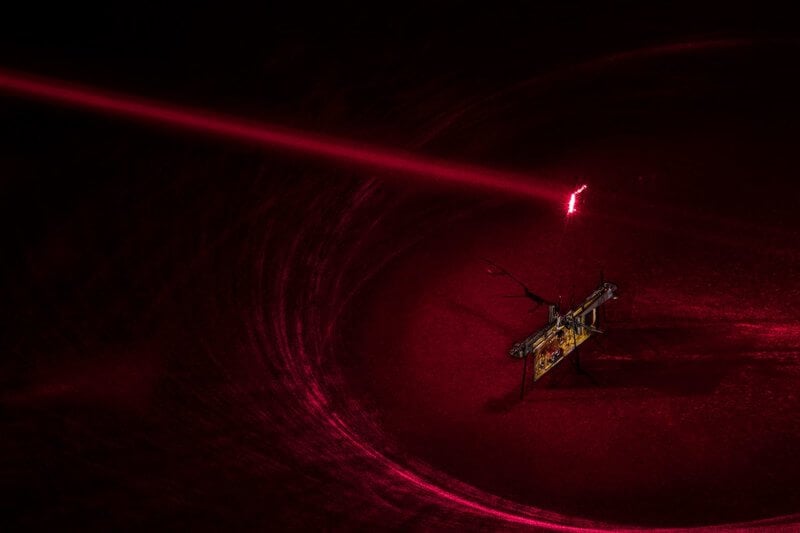
Modern robotics (as, in fact, in any electronics), there is one drawback: its operation requires a high-capacity battery or a permanent connection to the power source through the wire. But a group of researchers from the University of Washington has created a robot without wires and bulky batteries.
The robot, called RoboFly is receiving power by using a directed laser beam. But the interesting thing is that the robot-fly has a pair of independent from each other of the wings. This gives the robot the ability to be highly maneuverable, fast, and it can be used in a wide range of tasks, from exploration of remote places to work in the field of emergency situations and monitoring the growth and development of plants and animals. As said the author of the project Professor Department of mechanical engineering, Sawyer fuller,
“The concept of unmanned aerial vehicles, made in the image and likeness of insects, until today, was something on the verge of fantasy. Our project proves that nothing is impossible.”

In fact, the most difficult during development was not to invent a wireless power supply, and to develop wings. After all, sharp strokes up and down takes an awful lot of energy. And the existing power supply for robot-flies are not suitable: they’d exceeded the size of the robot. So the idea of wireless power has revealed itself. For its implementation, the researchers used lasers and photovoltaic cells. The laser beam falling on patacake located on the robot, is converted from light radiation into electrical energy. A special electrical system increases the amount of incoming energy by converting 7 incoming 240 volts.
“For flapping wings, the robot uses a series of pulses, resulting in the formation of the wave. If you do this in reverse order, the wings can rotate in the opposite direction. This allows you to take off and land smoothly. In the future we want to add a scheme to control laser beam that the robot was more independent and agile”.

The robot-fly, which receives energy wirelessly
Vladimir Kuznetsov